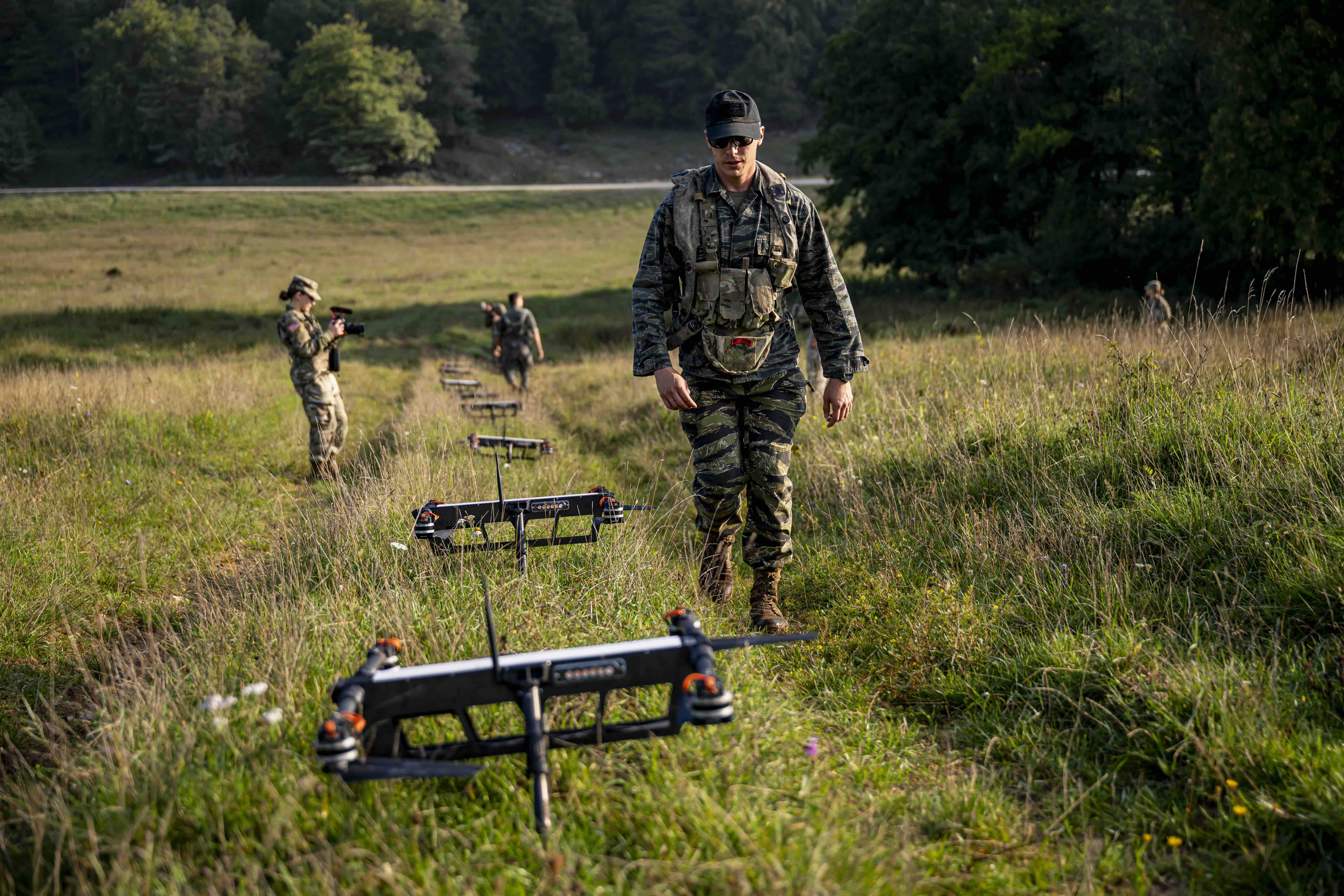Six NATO countries have announced plans to develop a coordinated “drone wall” to bolster their border defenses. Finland, Norway, Poland, and the three Baltic states (Estonia, Latvia, and Lithuania) are collaborating on the initiative, which aims to enhance security against hybrid attacks.
Lithuania’s Interior Minister Agnė Bilotaitė described the initiative as a groundbreaking step in regional defense. “This is a completely new thing — a drone wall stretching from Norway to Poland — and the goal is to use drones and other technologies to protect our borders against provocations from unfriendly countries and to prevent smuggling,” she told the Baltic News Service.
The decision to create this drone defense system follows a series of hybrid attacks by Russia, including forced migration and attempts to alter frontiers. These non-military measures, which often maintain an element of deniability, have prompted NATO’s eastern flank to seek more robust defensive measures.
Finland’s Interior Minister Mari Rantanen highlighted the potential long-term benefits of the drone wall. Speaking to public broadcaster Yle, she emphasized that the plan could significantly enhance the security of Finland’s extensive 1,340km border with Russia.
While specific details on the implementation and timing of the drone wall were not disclosed, Bilotaitė suggested that each country involved would need to do its “homework” and mentioned the possibility of utilizing European Union funds to support the project.
This initiative is part of a broader strategy by frontline NATO states to address the growing threats posed by Russia. The war in Ukraine has underscored the importance of drones in modern warfare, with both Ukrainian and Russian forces using them extensively for reconnaissance, artillery guidance, and direct attacks.
Estonia’s Interior Minister Lauri Laanemets stressed the importance of integrating drone surveillance and counter-drone capabilities to deter and counter influence activities from Russia. “As we see in the case of Ukraine, there is a constant race between the adversaries to develop technology, and new ways to use drones are continually being found in warfare,” Laanemets said.
In addition to enhancing border security, the six NATO countries also discussed evacuation plans for their populations in the event of a conflict. Finnish officials, for instance, noted the importance of having robust evacuation protocols, contrasting this with Ukraine’s approach of keeping civilians near the frontlines.
The announcement of the drone wall initiative comes amid heightened tensions following Russia’s invasion of Ukraine in February 2022. Recent provocations, such as the removal of border buoys by Russian guards and the proposed unilateral expansion of Russia’s maritime borders, have further galvanized NATO states to reinforce their defenses.
Expanded Coverage:









